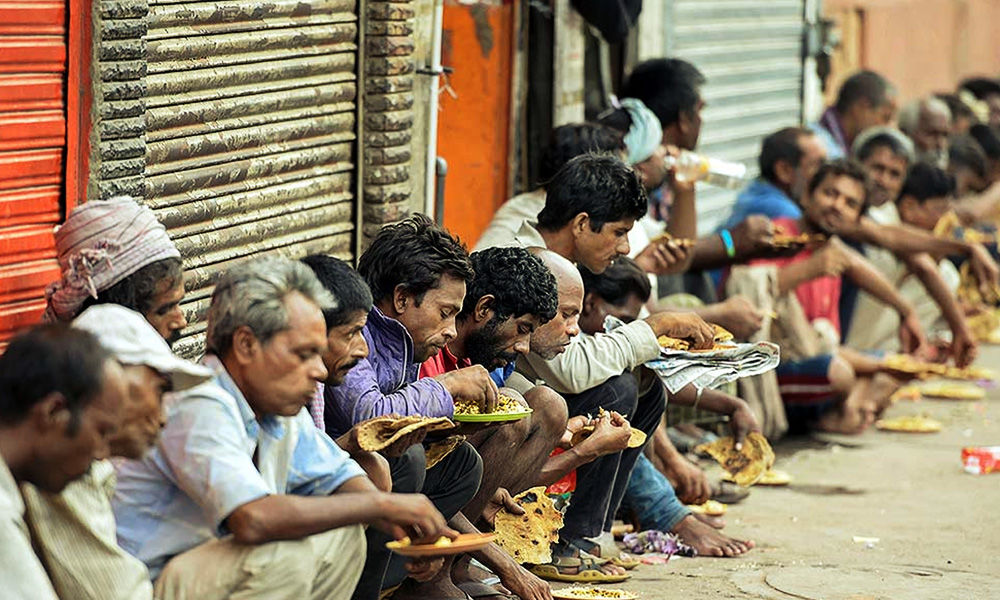This is as per the Multidimensional Poverty Index report released by UNDP.
NEW DELHI: More than 415 million people have been lifted out of poverty in India in the last 15 years, out of which more than 140 million people exited poverty in the country just in the last five years, says the Multidimensional Poverty Index (MPI) report released by the United Nations Development Programme (UNDP) last Monday.
The report, jointly produced by UNDP and Oxford Poverty and Human Development Initiative (OPHI), shows that the incidence of poverty fell by half between the 15 years on which it was assessed. The report says that the incidence of poverty fell by 55.1% to 27.7% between 2005/2006 and 2015/2016 and further fell to 16.4% between 2015/2016 and 2019/2021.
The swift reduction in poverty for a country as large as India and housing more than 1.3 billion people has been applauded across the world. This sharp reduction of poverty in India has also lifted the South Asian region from being considered as one of the poorest regions in the world. The poorest region of the world has now been taken over by Sub-Saharan nations.
“Of the nearly 415 million people who exited poverty in the 15 years prior to the COVID-19 pandemic, roughly 275 million did so between 2005/2006 and 2015/201649 and 140 million did so between 2015/2016 and 2019/2021. Deprivations in all 10 MPI indicators saw statistically significant reductions in both periods. India’s reduction in MPI value continued to be pro-poor in absolute terms,” the MPI report said.
“Rural areas were the poorest and saw the fastest reduction in MPI value. The incidence of poverty fell from 36.6% in 2015/2016 to 21.2% in 2019/2021 in rural areas and from 9.0% to 5.5% in urban areas,” according to the report.
The MPI report also indicated that if the poverty indices continue to shrink in the manner, it has been doing in India over the last 15 years, the country can meet the Sustainable Development Goal for halving in the country in all its forms by the target deadline of 2030. “Multidimensional Poverty” is just not about low income, but also about deprivation. According to Multidimensional Poverty Peer Network, most countries around the world define poverty as the lack of money. However, the poor themselves consider their experience of poverty much more broadly. It explains, “A person who is poor can suffer multiple disadvantage at the same time–for example they may have poor health or malnutrition, a lack of clean water or electricity, poor quality of work or little schooling. Focusing on one factor alone, such as income, is not enough to capture the true reality of poverty.”
Economists also say that Multidimensional Poverty measures can be used to create a more comprehensive picture. They reveal who is poor and how they are poor–the range of different disadvantages they experience.
World over, 1.2 billion people live in acute multidimensional poverty, half of these people (593 million) are children under age 18 and the developing region of the Sub-Saharan countries are the poorest in the world with more than 579 people living in acute poverty. This is followed by the South Asian region where nearly 385 million people are still living in poverty.
This report dwells into specific details on how the states in India have fared in terms of lifting people out of poverty in the last 15 years. The report states that among the states, Bihar, which was one of the poorest state in India between 2015 and 2016, saw the fastest reduction in poverty levels in absolute terms in the last five years.
“In Bihar, the incidence of poverty there fell from 77.4 percent in 2005/2006 to 52.4 percent in 2015/2016 to 34.7 percent in 2019/2021.”
“Relative terms the poorest states have not caught up. Of the 10 poorest states in 2015/2016, only one (West Bengal) was not among the 10 poorest in 2019/2021. The rest, Bihar, Jharkhand, Meghalaya, Madhya Pradesh, Uttar Pradesh, Assam, Odisha, Chhattisgarh and Rajasthan remain among the 10 poorest,” the MPI report stated.
Across states and Union Territories, the fastest reduction in relative terms was in Goa, followed by Jammu and Kashmir, Andhra Pradesh, Chhattisgarh and Rajasthan. However, the report further points out that although the reduction in MDP level has been significantly good for the poorer states like Bihar, Jharkhand, and Chhattisgarh over the last 15 years, these states have not been able to jump from the top 10 poorest state in India and have remained so over these years. Child poverty in India also still remains a concern where the country has one of the highest rate of child poverty in the world. Children are still the poorest age group. More than one in five children are poor (21.8%) compared with around one in seven adults (13.9%). India has about 97 million children under poverty. But the incidence of child poverty has dropped from 35% to 22% since 2015. While comparing the world report, half the children in the world are poor, but for India, one in five children are considered poor.
The real reason for child poverty has been indicated that many people in the country have child at a very early age and have less disposable income or are trying to establish themselves in their field. The microdata used to estimate the 2022 Global Multidimensional Poverty Index (MPI) values are gathered from household surveys across 111 countries, covering 6.1 billion people.

